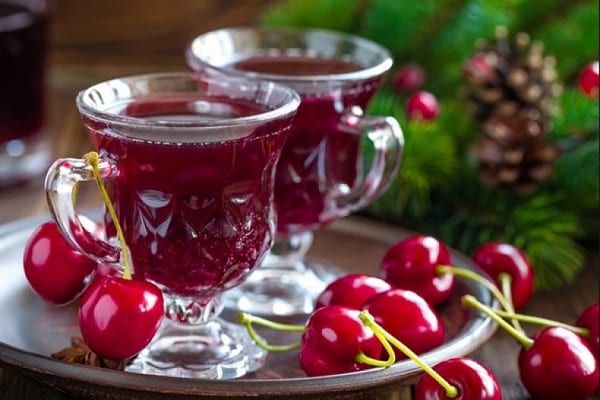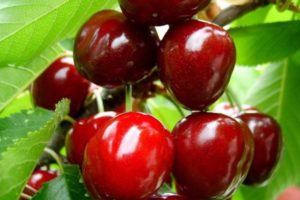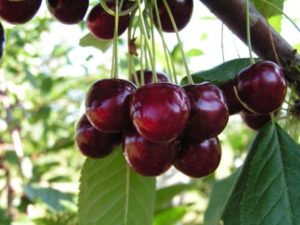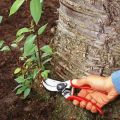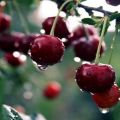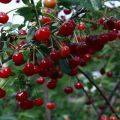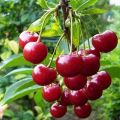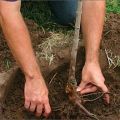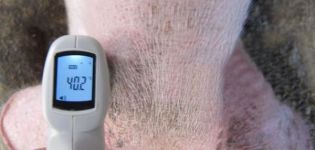Description of the best varieties of dwarf cherries, planting and care, fight against diseases
Insufficiency of the territory of the personal plot forces gardeners to plan planting more carefully and choose garden crops. With limited space, experts advise paying attention to varieties of dwarf cherries. Despite its small size, such a tree can surprise with yield indicators, but for this you need to know about the features of its cultivation.
Features of dwarf cherry
Dwarf cherry grows from 1 to 1.5 meters in height. Thin, spreading branches give it the appearance of a shrub. The leaves are small in size and shape, they grow no more than 5 cm and have a pointed end. Dwarf cherry blossoms last from 2 to 3 weeks and, unlike traditional varieties, is accompanied by a rich aroma.
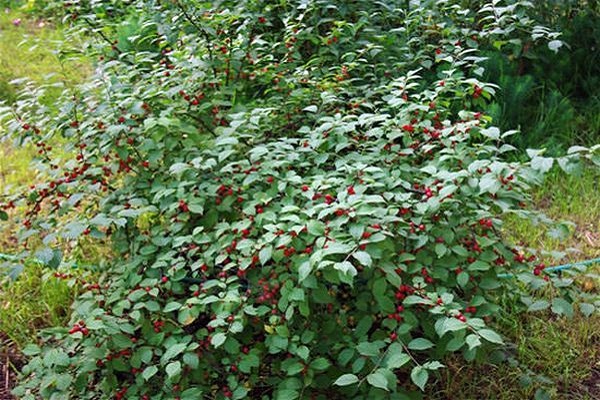
The berries of a bonsai can be from light to dark red, some varieties become almost black at the time of ripening. The average diameter of the fruits is 1 cm, and the average weight is no more than 5 g. A distinctive feature of low-growing trees is the early period of yield and its high yield. They are capable of reaching 10-12 kg, which is ensured due to the density of the arrangement of berries on the branches.
Advantages and disadvantages
The main advantages of dwarf cherries are the compactness of the plant and the quality of fruiting. According to the criterion of usefulness, they are not inferior to ordinary cherries. The advantages include the following points:
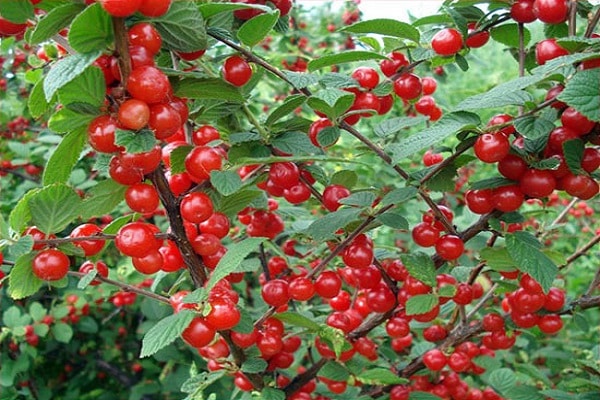
- good tolerance to sudden temperature changes;
- frost resistance;
- high survival rate;
- good disease resistance;
- ease of picking berries;
- early return of the crop.
Growing dwarf cherries does not require great skills, so even novice gardeners can do it. Due to the strength of the branches, the tree is not afraid of strong winds and drafts. A well-developed root system allows the plant to survive in places with a close occurrence of groundwater. High yield rates allow the use of low-growing varieties for industrial cultivation.
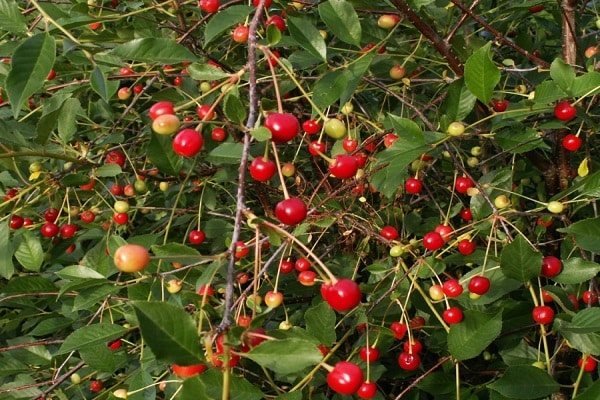
The disadvantages of dwarf cherries include the small size of the berries. Some note the lack of sweetness of the fruit and their insufficient meatiness. Planting requires choosing the right variety and considering growing conditions, and the lack of pollinators for ordinary dwarf cherries is fraught with a decrease in yield indicators.
The best varieties
Many years of work of breeders have made it possible to obtain a wide variety of varieties, therefore, undersized varieties are presented on the market in a wide variety.At the same time, there are representatives of dwarf trees that have won the love and recognition of Russian gardeners. For planting in the Moscow region, the best varieties are:
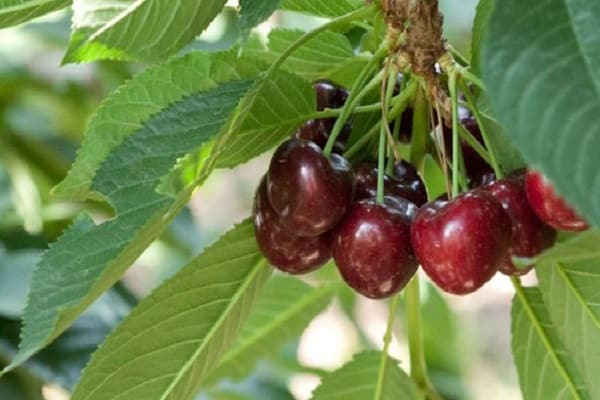
- Chocolate girl;
- Anthracite;
- Bystrinka.
Winter pomegranate belongs to the category of new varieties, it was obtained by crossing steppe and sandy varieties of cherry. The purpose of the breeding was to obtain a variety resistant to weather changes, so the plant easily tolerates hot weather and frost. A feature of the variety is strong branches and straight-like shoot growth.
The first opportunity to get a harvest can be expected in the 2-3rd year, the indicators of which increase gradually, and in the 7th year, up to 8 kg of fruits are removed. Ripening falls in mid-August, but the fruits are able to persist on the branch until the last days of September. The weight of the bright burgundy berry is 4 g.
Cherry Businka belongs to varieties with an average ripening period. The average weight of the berries is 3.5 g. The peculiarity is the color of the fruit, which is black. Winter-hardy cherry grows on average up to 3 m. The advantage of the plant is its high yield and versatility of using berries. Commercial cultivation shows a yield of 8 t / ha. The fruiting period falls in mid-July.
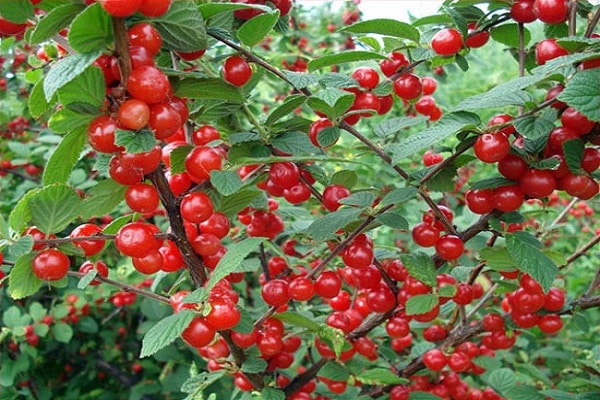
Growing principle
Planting the tree should be carried out in a well-lit place, since cherries are demanding for a sufficient supply of light. It is recommended to choose the south side of the garden, the elevation of the territory is not an obstacle. Low-growing trees do not react well to even a little shade, so although they are short, they should not be planted under large trees.
It is undesirable to be near the cherry of coniferous trees, they are carriers of infections dangerous for it.
To avoid disappointment, the plant should be bought in specialized nurseries. The following rules should be followed:
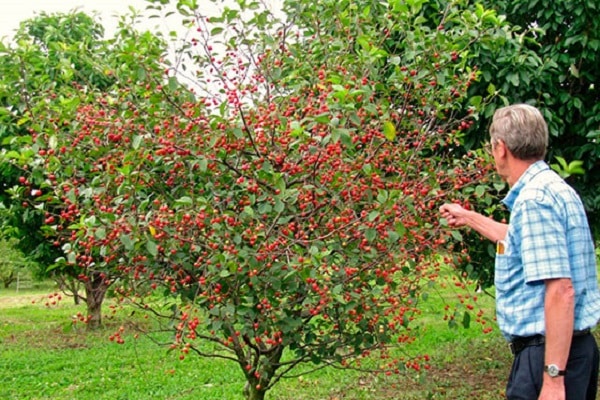
- choose a one- or two-year-old plant for planting, as they are acclimatized and have a sufficient degree of endurance;
- carefully examine the roots, removing dry processes;
- before planting, perform a soaking procedure for 10 hours in water or in a growth-stimulating solution;
- planting should be carried out in prepared soil, enrichment with manure and fertilizers must be carried out in the fall.
Sandy loam soil is considered ideal for growing low-growing rocks, since it is characterized by sufficient looseness, it easily passes air and water. The depth of the dug hole should be equal to 1⁄2 the height of the seedling. After planting, the soil needs to be moistened with 2 buckets of warm water.
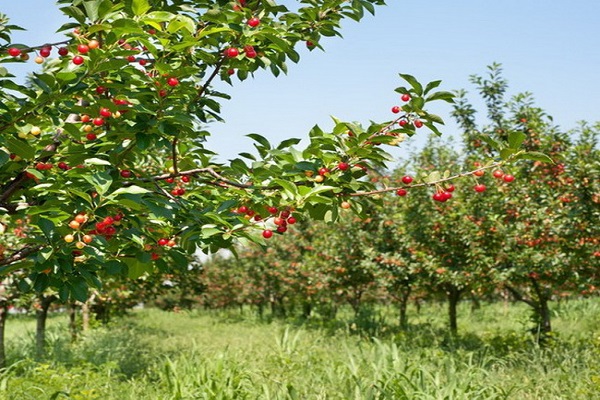
Care
Caring for a dwarf cherry is standard, does not require much time and effort. For successful cultivation, it is important to control watering and prune branches in a timely manner. Moisturizing is carried out as needed, increasing it during the dry season and at the time of ripening of berries. During long rains, loosening of the soil is required. This will allow excess moisture to leave in a timely manner and eliminate the risk of water stagnation.
Before flowering, a tree inspection is required. If there are frozen dried shoots, you need to remove them with a secateurs. Pruning is carried out in early spring before the start of the movement of juices. Such actions help to enhance the growth of shoots and make it possible for the tree to grow stronger during flowering. Autumn branch removal is carried out only when absolutely necessary.
For better fruiting, it is recommended to do periodic fertilizing with fertilizers. The first is carried out before flowering after bud formation. After blooming flowers, the introduction of organic matter is permissible. In the autumn period after harvesting, mineral fertilizers in the form of potassium, phosphorus and calcium are applied to the soil.
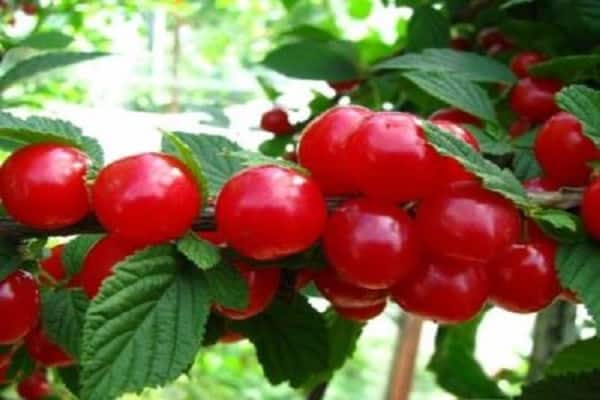
Diseases and pests
Dwarf cherry species are resistant to pests and various diseases of fruit trees. Most often, they are exposed to lesions of a fungal nature, therefore, it is necessary to conduct periodic inspection for their presence. Planting can suffer from the following diseases:
- moniliosis;
- various types of spotting;
- scab.
Dwarf trees are often subject to aphid infestations. The greatest danger threatens seedlings at the time of the appearance of new leaves and young shoots. To common cherry pests include worms, moths, fruit mites.

Control methods
Common fungal cherry diseases include moniliosis, which is often called monilial burn. It is easy to spot when the plant is in bloom. If it is present, dry rot begins to form on the branches, they dry out, and the tree can completely die. The symptoms of the lesion are observed in the following sequence:
- there are foci resembling the effects of exposure to fire;
- gray growths are formed on the bark;
- the berries are covered with gray rot;
- branches crack and die.
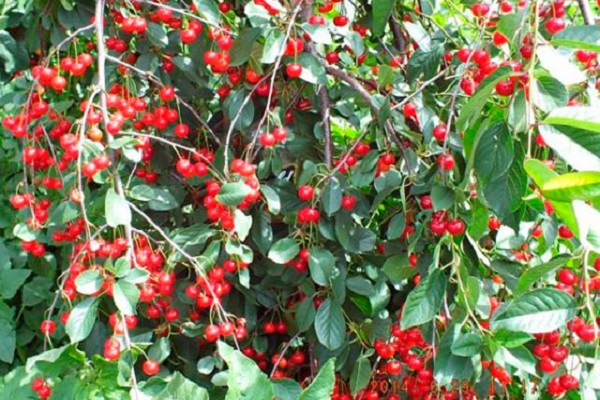
To combat moniliosis fungicides are used - "Oleocobrite", "Captan", "Kuprozan". Before processing, the affected areas and fruits are removed. One procedure may not be enough, in this case the manipulations are repeated.
Cherry plantings may suffer from brown or perforated spotting. The disease manifests itself in the form of dark, brown or yellowish spots, in the place of which holes form over time. The leaves begin to dry and fall off. They fight this disease with a 1% solution of copper sulfate or Bordeaux liquid. The latter is also used for scab.

To prevent contamination of plantings with aphids, spraying is carried out with special preparations, of which there are a lot of products for the garden today. Processing is done before bud break. Good results are obtained when using "Nitrafen" or "Olecuprite". At the first signs of the presence of larvae on the plant, the plantings are sprayed until the buds open. Immediately before the beginning of flowering, the work is repeated using "Karbofos".
During the gardening season, if necessary, insecticide treatment is repeated.
Prevention
Prevention of the appearance of diseases and pests is compliance with the rules of planting, timely removal of affected branches and fruits. The first prophylactic spraying is carried out after the pruning procedure, using a 1% solution of vitriol for this purpose. To prevent diseases, the lower part of the shoots is whitewashed with lime. To protect the tree from pests that spent the winter season in the bark, spraying with a urea solution made from 700 g of the drug and 10 liters of water will help.
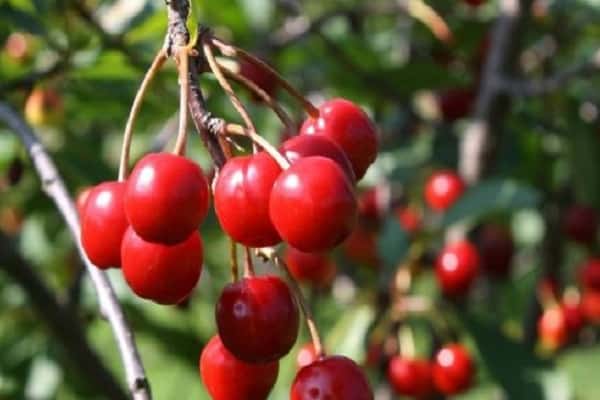
When using Bordeaux liquid, the timing of the spraying should be observed:
- the first - until bud break;
- the second - after the end of flowering;
- third - no later than 3 weeks before the start of berry picking.
Spraying with "Zircon" or "Ecoberin" will help to increase the tree's resistance to various pests.
